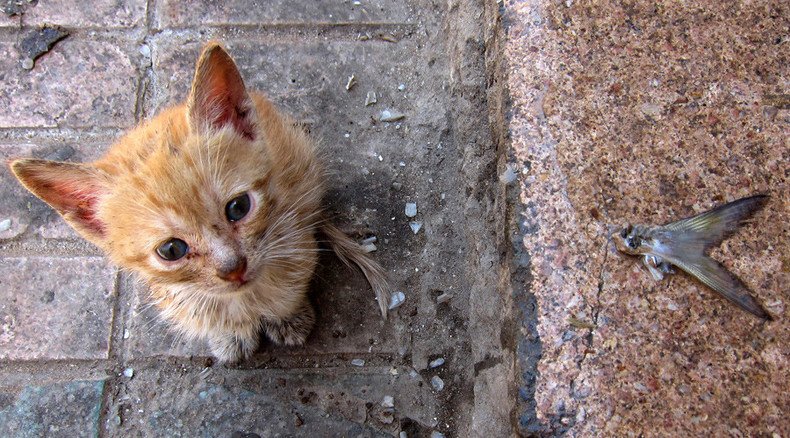Australia to kill 2mn feral felines to protect native species

The Australian government has announced a new controversial five-year strategy to save threatened native species. It plans to cull two million feral cats, which are said to pose a threat to Australian wildlife.
“The feral cat will be listed as a harmful pest and hunted down through various methods,” said Greg Hunt, the Australian federal environment minister, while presenting the new strategy at a Melbourne zoo, International Business Times reports. “Culling methods will include baiting, shooting or poisoning,” he added.
Australia’s first threatened-species commissioner, Gregory Andrews, attempted to explain the government’s position on national radio. According to Andrews, “It is very important to emphasize that we don’t hate cats. We just can’t tolerate the damage that they’re doing anymore to our wildlife ... Over 120 Australian animals are at risk of extinction from feral cats. So the scientific evidence is crystal clear that they’re the biggest threat.”
Australia declares war on feral cats
https://t.co/iUCqyfyZW5
— AJ+ (@ajplus) July 18, 2015The government is going to establish 10 feral cat-free enclosures which will be among the largest fenced in habitat areas in the Northern Territory. Cats will also be killed in 10 million hectares in neighboring areas.
Along with eradication of feral cats, the strategy includes three more key elements: creating safe havens for species and emergency intervention to avert extinctions.
Australia wants to kill 2 million feral cats. Are werewolves next @1PhoebeJTonkin?! And then who? Gingers?! http://t.co/1IiYbGBY3I
— Andrew Miller (@MillerLoLife) July 16, 2015Australia is to allocate $6.6 million for implementation of the strategy. It also hopes to get some money from private donators, however. “What I’d like to see is additional funding from others. The whole idea here is putting out a prospectus. There are other projects we want to encourage. We want to encourage with this prospectus private, philanthropic, NGO and state and territory additional support,” said Hunt as cited by the Guardian.
Australia lost about 130 wildlife species after Europeans arrived on the continent. Nowadays, many other native species are endangered. Some 20 mammal, 20 bird, and even more plant species are currently under state protection.
Come on Australia! Download Feral CatScan app now & report #feralcats & their impacts & eradications #TSsummitpic.twitter.com/NSOdzLgWea
— Gregory Andrews (@TSCommissioner) July 16, 2015“We are drawing a line in the sand today which says ‘on our watch, in our time, no more species extinction’. It’s tough, it’s a challenge, we can do much and we can do better”, said the environment minister.
There are 10 mammal species regarded by the Australian government as a priority for protection. They are the numbat, mala, mountain pygmy-possum, greater bilby, golden bandicoot, brush-tailed rabbit-rat, eastern bettong, western quoll, Kangaroo Island dunnart and eastern barred bandicoot.
Cat culls & feral-free reserves take main share of $6.6M Threatened Species Strategy http://t.co/NXxIbyNSlB#TSsummitpic.twitter.com/e7a1mNYPGE
— Wildlife Land Trust (@wlt_au) July 17, 2015Two other critically endangered mammals, the leadbeater’s possum and the central rock rat, will benefit from “emergency interventions”.
It is not the first time Australia has waged ‘war’ against intrusive species. Previously, cane toads and European wild rabbits were targets of similar campaigns. However, arguably the most famous Australian animal cull had little to do with environment: in 1932, during “the Great Emu War,” Australian army forces killed thousands of emus with machine guns because the birds were causing damage to wheat crops.
Why has it taken 28 species of our native animals to vanish from this earth BEFORE someone made this decision -... http://t.co/VN3WGaslYR
— Larry Dawson (@larryadawson) July 17, 2015











